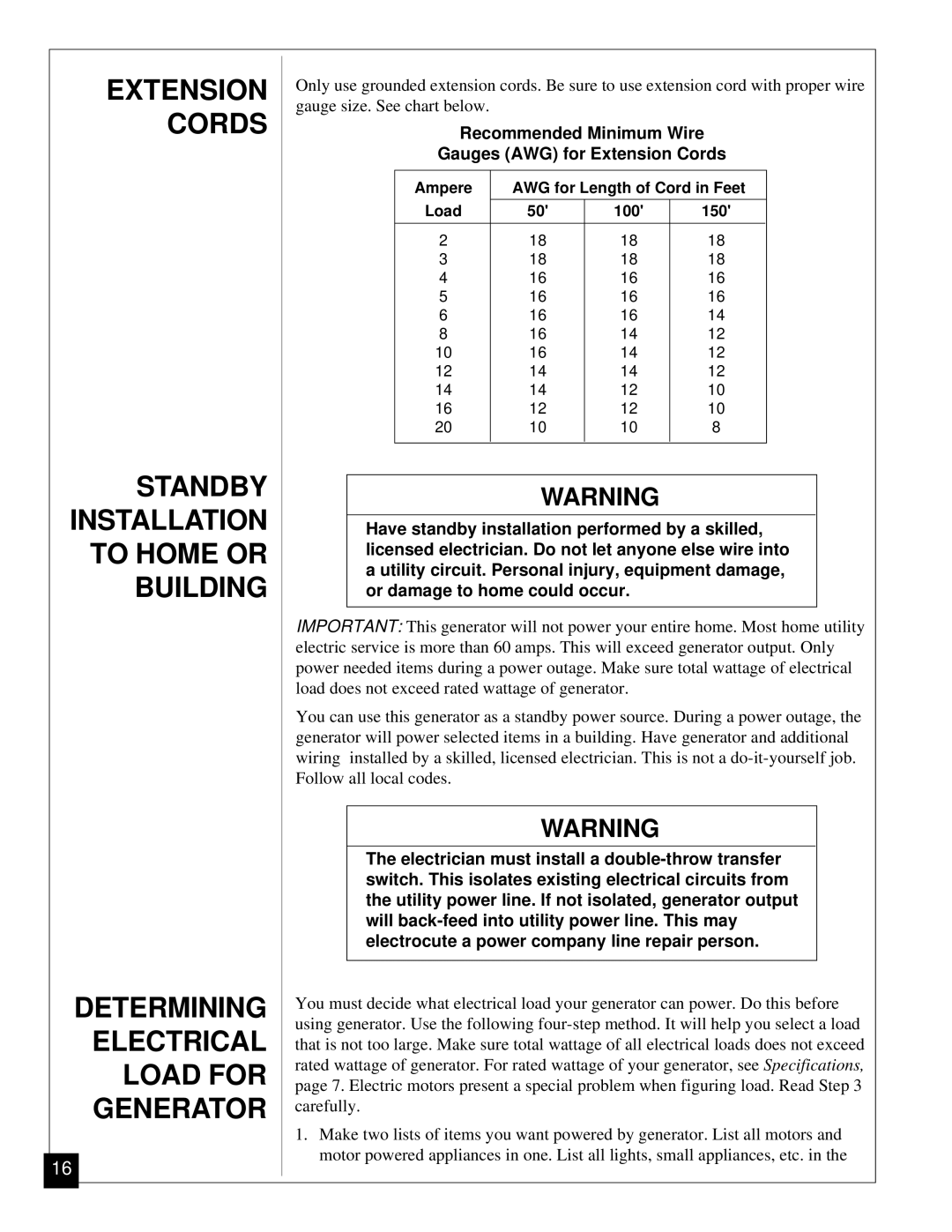
EXTENSION
CORDS
STANDBY INSTALLATION TO HOME OR BUILDING
DETERMINING ELECTRICAL LOAD FOR GENERATOR
16
Only use grounded extension cords. Be sure to use extension cord with proper wire gauge size. See chart below.
Recommended Minimum Wire
Gauges (AWG) for Extension Cords
Ampere | AWG for Length of Cord in Feet | ||
|
|
|
|
Load | 50' | 100' | 150' |
|
|
|
|
2 | 18 | 18 | 18 |
3 | 18 | 18 | 18 |
4 | 16 | 16 | 16 |
5 | 16 | 16 | 16 |
6 | 16 | 16 | 14 |
8 | 16 | 14 | 12 |
10 | 16 | 14 | 12 |
12 | 14 | 14 | 12 |
14 | 14 | 12 | 10 |
16 | 12 | 12 | 10 |
20 | 10 | 10 | 8 |
|
|
|
|
WARNING
Have standby installation performed by a skilled, licensed electrician. Do not let anyone else wire into a utility circuit. Personal injury, equipment damage, or damage to home could occur.
IMPORTANT: This generator will not power your entire home. Most home utility electric service is more than 60 amps. This will exceed generator output. Only power needed items during a power outage. Make sure total wattage of electrical load does not exceed rated wattage of generator.
You can use this generator as a standby power source. During a power outage, the generator will power selected items in a building. Have generator and additional wiring installed by a skilled, licensed electrician. This is not a
WARNING
The electrician must install a
You must decide what electrical load your generator can power. Do this before using generator. Use the following
1.Make two lists of items you want powered by generator. List all motors and motor powered appliances in one. List all lights, small appliances, etc. in the
